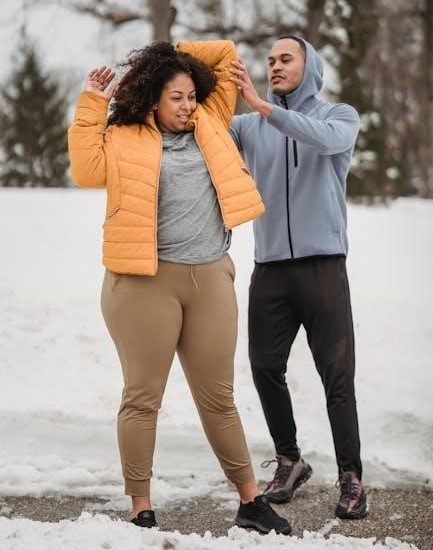Welcome to our comprehensive jacket size guide! This guide helps you find the perfect fit by providing measurement tips, size charts for men, women, and kids, and style-specific considerations. Learn how to measure your chest, shoulders, and sleeve length accurately. Discover the differences between slim, regular, and relaxed fits, and explore jacket styles like leather, bomber, and puffer. Troubleshoot common fit issues and maintain your jacket’s shape with care tips. Whether you’re shopping for everyday wear or a special occasion, this guide ensures you make informed choices for a flattering and comfortable fit.

Understanding Jacket Measurements
Understanding jacket measurements is key to ensuring a perfect fit. Measure your chest, shoulders, and sleeve length accurately. Consistency is crucial for comfort and style across all jacket types.
How to Measure Your Chest
To measure your chest for a jacket, wrap a flexible tape measure around the fullest part of your torso. Position the tape under your arms, ensuring it is level and parallel to the floor. Keep the tape snug but not too tight. For women, wear a fitted bra to ensure accuracy. The measurement taken at this point corresponds to your chest size, which is essential for selecting the correct jacket size. This method applies to both men and women and forms the basis of most jacket size charts.
How to Measure Your Shoulder
To measure your shoulder width for a jacket, place the tape measure at the tip of one shoulder and extend it across your back to the tip of the other shoulder. Ensure the tape is level and follows the natural curve of your shoulders. Keep the tape snug but not tight, as this will provide an accurate measurement. This method works for both men and women and helps determine the optimal shoulder fit for your jacket. Accurate shoulder measurements are crucial for ensuring the jacket sits comfortably and maintains its intended shape.
How to Measure Sleeve Length
Measuring sleeve length involves placing the tape measure at the center base of your neck at the back and extending it down to your wrist, keeping your arm slightly bent. This ensures the sleeve will fit comfortably while allowing for natural movement. Proper sleeve length is crucial for both style and functionality, ensuring the jacket looks and feels right. This method applies universally to men and women and is essential for various jacket styles, such as bomber and puffer jackets, where precise fit is key.
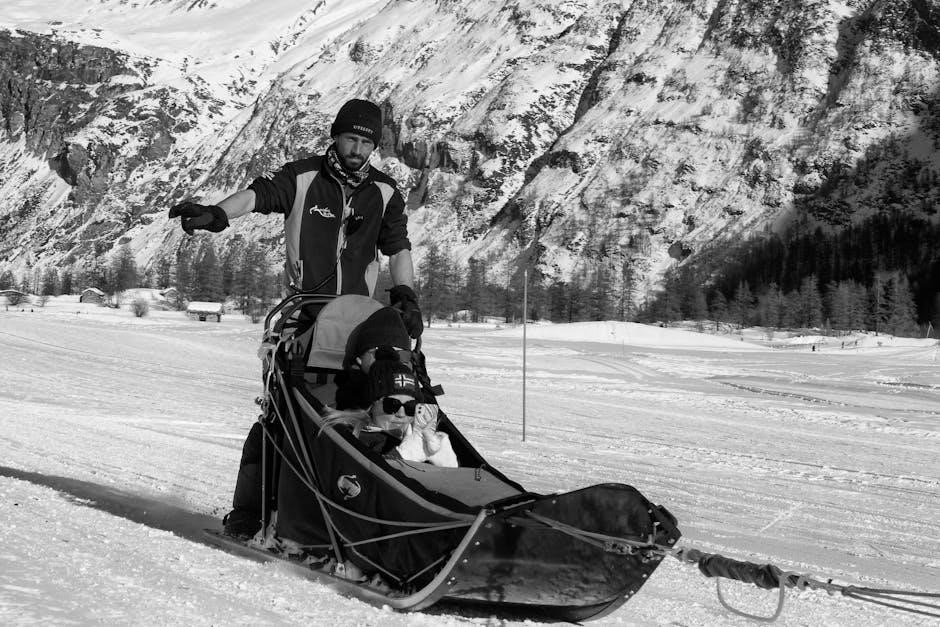
Men’s Jacket Size Guide
This guide helps men find their perfect jacket size by providing detailed chest, shoulder, and sleeve measurements. Sizes range from S to 3XL, ensuring a tailored fit.
How to Measure for Men
To ensure the best fit, follow these steps: Measure your chest by wrapping a tape measure under your arms at the widest part, keeping it horizontal. For shoulders, measure from one shoulder tip, across your back, to the other tip. Sleeve length is measured from the base of your neck, over your shoulder, and down to your wrist with your elbow slightly bent. Ensure the tape is snug but not tight for accurate results. These measurements will help you choose the right size from the men’s jacket size chart.
Men’s Jacket Size Chart
| Size | Chest (in) | Sleeve Length (in) |
|---|---|---|
| S | 36-38 | 32-33 |
| M | 39-41 | 33-34 |
| L | 42-44 | 34-35 |
| XL | 45-47 | 35-36 |
| 2XL | 48-50 | 36-37 |
| 3XL | 51-53 | 37-38 |
Refer to this chart to find your size based on chest and sleeve measurements, ensuring a perfect fit for your jacket.

Women’s Jacket Size Guide
Find your perfect fit with our women’s jacket size guide. Measure your chest and sleeve length for accurate sizing. Choose from slim, regular, or relaxed fits to suit your style and body type, ensuring comfort and confidence in every jacket you wear.
How to Measure for Women
To ensure the best fit, measure yourself accurately. For women, wrap a tape measure around the fullest part of your chest, keeping the tape horizontal. Measure your shoulder width from one tip to the other across your back. For sleeve length, start at the center of your neck, go over your shoulder, and down to your wrist. Take these measurements while wearing a bra that fits well. Use these measurements to find your size in the women’s jacket size chart for a perfect, comfortable fit that flatters your silhouette.
Women’s Jacket Size Chart
Use the women’s jacket size chart to find your perfect fit; Sizes range from S to 3XL, with measurements based on chest circumference. For example:
– S: 34-36 inches
– M: 38-40 inches
– L: 42-44 inches
– XL: 46-48 inches
– 2XL: 50-52 inches
– 3XL: 54-56 inches
These measurements ensure a comfortable and flattering fit. Match your chest measurement to the chart to determine your size. This chart is designed to help you choose the right jacket size effortlessly, ensuring optimal comfort and style for any occasion.

Kids’ Jacket Size Guide
Measure your child’s chest, shoulders, and sleeve length for the best fit. Use our size chart, ranging from 2T to 3XL, to determine their perfect size easily.
How to Measure for Kids
To ensure the perfect fit for your child’s jacket, start by measuring their chest. Wrap a tape measure around the fullest part, keeping it horizontal and parallel to the floor. Next, measure the shoulder width by placing the tape from one shoulder tip to the other across the back. For sleeve length, measure from the top of the shoulder down to the wrist. Use these measurements to consult our size chart and find the ideal fit for your child. Always consider their current jacket size as a reference for accuracy.
Kids’ Jacket Size Chart
Our kids’ jacket size chart is designed to help you find the perfect fit for your child. Sizes range from 2-14, corresponding to ages 2-14 years. Measure your child’s chest and compare it to the chart. For example, size 4-5 fits a chest of 23-24 inches, while size 12-13 fits 29-30 inches. Heights range from 32-34 inches for size 2-3 up to 58-60 inches for size 14. Use this chart to match your child’s measurements with the appropriate size for a comfortable and tailored fit.
- Size 2-3: Chest 23-24″, Height 32-34″
- Size 4-5: Chest 25-26″, Height 36-38″
- Size 6-7: Chest 27-28″, Height 40-42″
- Size 8-9: Chest 29-30″, Height 44-46″
- Size 10-11: Chest 31-32″, Height 48-50″
- Size 12-13: Chest 33-34″, Height 52-54″
- Size 14: Chest 35-36″, Height 58-60″
How to Choose the Right Fit Style
Choose from slim, regular, or relaxed fit styles based on your body type and preference. Slim fits are tailored, regular offers comfort, and relaxed is casual.
Slim Fit Jackets
Slim fit jackets are designed for a tailored, modern look, offering a neater silhouette. They are cut closer to the body, ideal for those seeking a streamlined appearance. To ensure the best fit, measure your chest around the fullest part, keeping the tape horizontal. Slim fit jackets typically range from S to 3XL, with chest measurements spanning 36-38 inches for S up to 51-53 inches for 3XL. This style is perfect for layering or standalone wear, providing both comfort and style. Always refer to the size chart for accurate sizing to maintain the desired fit.
Regular Fit Jackets
Regular fit jackets offer a classic, comfortable silhouette, ideal for everyday wear. They provide a balanced fit, neither too tight nor too loose, allowing ease of movement. Chest measurements for regular fit jackets typically range from 36-38 inches for S to 51-53 inches for 3XL. This style is versatile, suitable for various body types and occasions. It’s perfect for layering or worn on its own, ensuring a relaxed yet polished look. Always check the size chart to ensure the best fit, as regular fit jackets are designed for practicality and timeless appeal.
Relaxed Fit Jackets
Relaxed fit jackets are designed for comfort and a laid-back style, offering a looser silhouette compared to slim or regular fits. They are ideal for casual wear or layering, providing ample room across the chest and sleeves. Chest measurements for relaxed fits typically range from 38-40 inches for S to 54-56 inches for 3XL. This style is perfect for those who prioritize ease of movement and a relaxed look. While they are spacious, they avoid being overly bulky, ensuring a comfortable yet stylish fit for everyday use or outdoor activities.
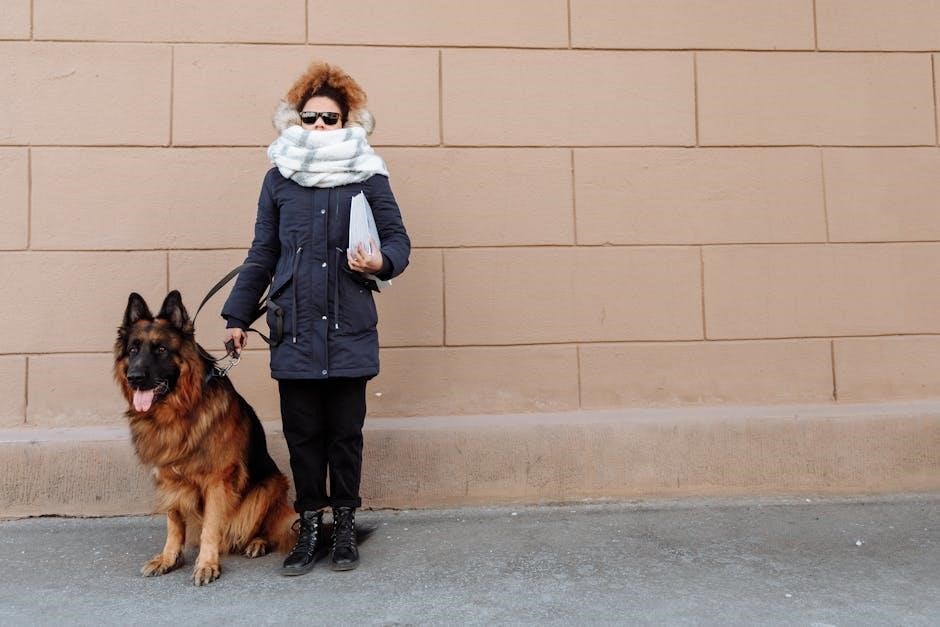
Jacket Styles and Size Considerations
Explore popular jacket styles like leather, bomber, puffer, and denim, each with unique size considerations. Understanding fabric, fit, and measurements ensures the perfect jacket for your needs and preferences.
Leather Jackets
Leather jackets offer a sleek, durable option with a classic appeal. They are typically form-fitting, so accurate chest and shoulder measurements are crucial for the right fit. Slim-fit leather jackets are designed for a neater silhouette, while regular or relaxed styles provide more comfort. Consider adjustable features like cuffs or hem for a customizable fit; When choosing a size, ensure freedom of movement, especially if layering over sweaters or shirts. Proper care and conditioning can extend the life of your leather jacket, maintaining its shape and quality over time. Selecting the right size ensures both style and functionality.
Bomber Jackets
Bomber jackets are known for their classic, casual design and loose fit. To ensure the best fit, measure your chest around the fullest part and check sleeve length from the neck base to wrist. Slim-fit options are available for a neater look. Adjustable cuffs and hem allow customization. Consider layering needs and choose a size that allows ease of movement. Proper care ensures longevity and maintains shape, making bomber jackets a lasting addition to your wardrobe.
Puffer Jackets
Puffer jackets are a winter essential known for their insulation and bulky design. When measuring for a puffer jacket, consider layering needs, as they are often worn over sweaters or fleeces. Measure your chest around the fullest part and ensure sleeve length from the neck base to wrist is accurate. Puffer jackets typically have a relaxed fit, but slim-fit options are available. Adjustable hems and cuffs can customize the fit. Choose a size that allows ease of movement while maintaining warmth. Proper care, like avoiding machine washing, helps preserve the insulation and shape of the jacket.
Denim Jackets
Denim jackets are a timeless wardrobe staple, offering a classic fit that works for casual or stylish looks. When sizing, consider the structured design and potential stretch of the denim. Measure your chest around the fullest part and ensure shoulder measurements align for a comfortable fit. Sleeve length should reach your wrist for a tailored look; If you prefer a snug fit, order your true size; for a looser style, size up. Adjustable cuffs and hem allow customization. Denim jackets are durable but may shrink slightly, so check care labels for washing instructions to maintain shape and fit;

Jacket Size Chart Comparison Across Brands
Brands often vary in sizing standards, so comparing charts is essential. Check measurements like chest and sleeve length across brands to ensure consistency and proper fit.
Popular Brand Size Charts
Major brands like Patagonia, ASOS, and Members Only offer detailed size charts. Patagonia’s slim fit jackets feature chest sizes from 36-38 (S) to 51-53 (3XL). ASOS provides specific measurements for men, women, and kids, ensuring accurate fits. Members Only includes charts for men, women, and kids, focusing on chest and sleeve lengths. Each brand tailors its sizing to cater to different body types and styles. Always refer to the brand’s guide for precise measurements, as standards vary. Comparing charts across brands helps ensure the best fit for your preferred jacket style and fabric type.
Understanding Sleeve Length
Sleeve length is measured from the base of the neck to the wrist. Accurate measurements ensure the jacket fits correctly, avoiding sleeves that are too short or long.
To measure sleeve length, start at the center back of your neck, just above the shoulder blade. Use a tape measure and extend it down to your wrist. Ensure your arm is relaxed and your palm is facing downward for accuracy. This method provides the correct length for a jacket sleeve, ensuring proper fit and comfort. Double-check the measurement to avoid errors and ensure the sleeve aligns with your wrist bone for the ideal length.
Importance of Sleeve Length in Fit
Sleeve length is crucial for a jacket’s overall fit and functionality. Too short, and the jacket may appear ill-fitting; too long, and it can restrict movement or look bulky; Proper sleeve length ensures comfort and style, allowing freedom of movement while maintaining a polished appearance. For active use, accurate sleeve length prevents fabric from bunching, ensuring optimal performance. Whether for casual wear or formal events, correct sleeve length enhances both aesthetics and practicality, making it a key factor in choosing the perfect jacket.
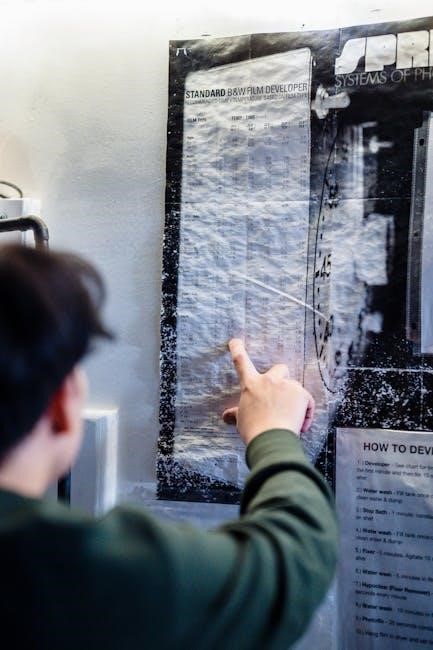
Understanding Chest Measurements
Chest measurements are vital for determining jacket fit. Measure around the fullest part, keeping the tape horizontal. Accurate measurements ensure comfort, proper fit, and desired style.
How to Measure Chest for Jackets
Stand upright and relax your posture. Place the tape measure under your armpits, across the fullest part of your chest, ensuring it’s horizontal and snug but not too tight. Measure over a thin shirt or bare skin to avoid adding bulk. Record the measurement and compare it to the brand’s size chart for accurate sizing. This ensures a proper fit, whether you’re choosing a slim-fit or regular jacket style. Consistency is key for the best results.
Importance of Chest Measurements
Chest measurements are crucial for ensuring a jacket fits correctly. They help determine the optimal size, preventing the jacket from being too tight or too loose. Accurate chest measurements ensure comfort and proper drape, making the jacket look flattering and feel comfortable. Additionally, chest size is a primary factor in jacket size charts, helping you choose the right fit style, whether slim, regular, or relaxed. Proper chest measurement ensures the jacket sits well on the body, allowing freedom of movement while maintaining a polished appearance.
Adjustable Features in Jackets
Adjustable features like hems and cuffs allow customization for a tailored fit. These elements ensure comfort and style, providing versatility to suit individual preferences and body types perfectly.
Adjustable Hem
An adjustable hem allows you to customize the fit of your jacket at the bottom. This feature, often using Velcro, drawstrings, or buttons, ensures the jacket sits perfectly on your hips. It prevents cold air from entering and gives a more tailored appearance. Adjustable hems are particularly useful for varying body types and activities, offering both style and functionality. This feature enhances comfort and versatility, making it ideal for jackets worn in different settings, from casual outings to outdoor adventures.
Adjustable Cuffs
Adjustable cuffs are a practical feature that allows you to customize the fit at the sleeves. Typically using Velcro, buttons, or drawstrings, they provide a secure and comfortable closure. This feature prevents cold air from seeping in and offers a tailored appearance. Adjustable cuffs are especially useful for individuals with varying wrist sizes or those who layer clothing. They enhance versatility, ensuring a perfect fit whether you’re wearing the jacket on its own or over thick sweaters. This detail combines functionality with style, making it a desirable element in many jacket designs.
Understanding Fabric and Fit
Fabric type significantly impacts jacket fit. Thicker materials like leather or denim offer structure, while lighter fabrics like polyester provide flexibility. Choose fabrics that suit your lifestyle and body type for optimal comfort and appearance.
Fabric Types and Their Impact on Fit
Different fabrics influence how a jacket fits and feels. Leather jackets are sturdy and form-fitting, while denim jackets offer a casual, relaxed shape. Polyester and nylon fabrics, often used in puffer jackets, provide flexibility and warmth without restricting movement. Cotton and wool blends ensure breathability and softness, making them ideal for tailored styles. Understanding fabric types helps you choose a jacket that not only fits well but also meets your lifestyle needs, ensuring comfort and durability. Each fabric has unique characteristics that affect the overall fit and feel of the jacket.
Troubleshooting Jacket Fit Issues
Troubleshooting jacket fit issues? Check if the jacket is too tight or too loose. Ensure accurate measurements, consider fabric stretch, and adjust fit as needed.
- If too tight, consider a larger size or adjustable features.
- If too loose, opt for a smaller size or tailored alterations.
Addressing fit problems ensures a comfortable and flattering wear.
When the Jacket is Too Tight
If your jacket feels too tight, it may restrict movement and comfort. Start by rechecking your measurements to ensure accuracy. Consider sizing up for a better fit or opting for a style with adjustable features like cuffs or hem to customize the fit. Fabric type also matters—stretchy materials like elastane blends can provide more flexibility. If the tightness persists, explore relaxed-fit options or consult a size chart specific to the brand. Ensuring a comfortable fit is key to enjoying your jacket and maintaining its shape over time.
- Recheck your chest and shoulder measurements.
- Opt for a larger size or adjustable features.
- Choose fabrics with stretch for added comfort.
When the Jacket is Too Loose
If your jacket feels too loose, it may lack structure and style. Start by double-checking your measurements to ensure you haven’t sized down too much. Consider opting for a tailored or slim-fit style instead. Adjustable features like cuffs and hem can help customize the fit. Layering with tighter-fitting clothes underneath or adding a belt can also create a more defined silhouette. Choosing a jacket with darts or a nipped-in waist may provide a better shape. Ensure the fabric has some structure, like denim or leather, to avoid excessive bagginess and maintain a polished look.
- Opt for a tailored or slim-fit style.
- Use adjustable features to customize fit.
- Layer with tighter clothes or add a belt.
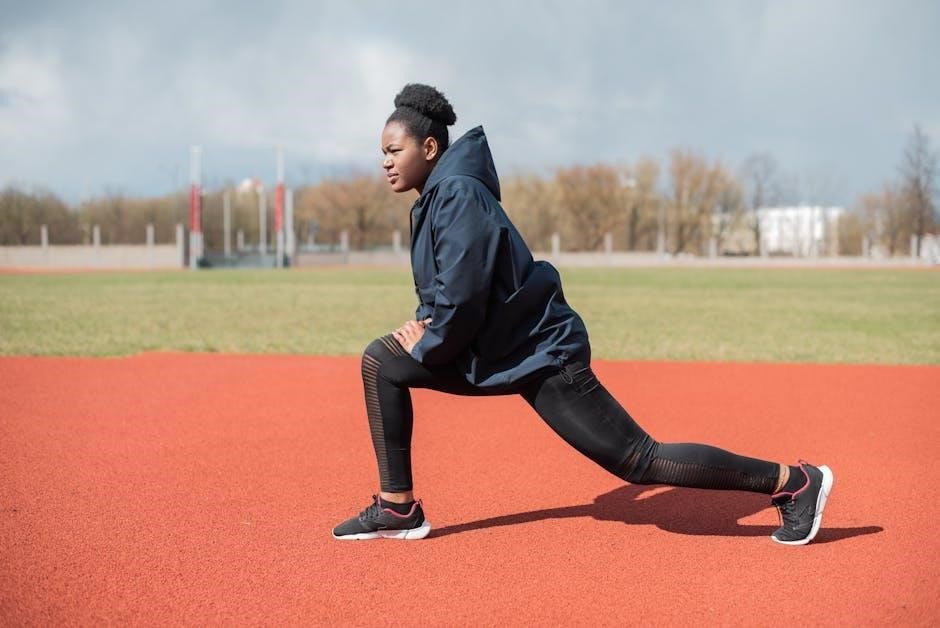
Jacket Care and Fit Maintenance
Proper care ensures your jacket retains its shape and fabric quality. Wash and dry according to fabric type, store on a hanger, and avoid direct sunlight. Use a soft brush for leather and avoid over-drying to maintain fit and longevity.
How to Wash and Dry Jackets
Washing and drying jackets requires care to maintain their quality and fit. Always check the care label for specific instructions. For most jackets, use a gentle cycle with cold water and mild detergent. Avoid using bleach or fabric softeners, as they can damage materials. Leather jackets should be hand-washed or professionally cleaned. For puffer jackets, reshape while damp to restore loft. Air-dry jackets away from direct sunlight to prevent fading. Avoid machine drying, especially for delicate fabrics, to preserve size and texture. Proper care ensures your jacket remains in great condition for years.
How to Store Jackets
Properly storing jackets helps maintain their shape and quality. Hang jackets on sturdy, padded hangers to prevent stretching and creases. Use a cool, dry place away from direct sunlight to avoid fading. For out-of-season storage, consider breathable cloth covers to protect from dust. Avoid folding jackets, as this can cause wrinkles; if necessary, use tissue paper to cushion folds. Leather jackets should be stored separately to prevent moisture transfer. Clean jackets before storing to prevent stains from setting in. Regularly check stored items to ensure they remain in good condition. Proper storage extends the life of your jackets.

Additional Resources and Tools
Explore online size guides, measurement tools, and tutorials for precise jacket sizing. Utilize brand-specific charts, video tutorials, and FAQ sections to ensure the best fit for your jacket.
Online Size Guides
Online size guides provide detailed measurements and fit recommendations for jackets. Many brands offer interactive tools to help determine your size based on body measurements. Use charts and tutorials to ensure accuracy. These guides often include video tutorials, fit predictors, and brand-specific sizing charts. They also offer tips on how to measure yourself correctly. Online resources like ASOS and Patagonia provide comprehensive guides for men, women, and kids. Utilize these tools to find your perfect fit and reduce the risk of sizing errors. They are accessible 24/7, making jacket shopping convenient and stress-free.
Measurement Tools
Essential tools for accurate jacket measurements include a flexible tape measure and a ruler. Use a tape measure to wrap around your chest, shoulders, and sleeves. For flat measurements, like shoulder width, a ruler is ideal. Digital tools, such as apps and online calculators, can also help convert measurements or predict sizes. Many online guides provide printable measurement charts for reference. Dual-sided mirrors aid in self-measurement, ensuring accuracy. These tools ensure precise sizing and a better fit when shopping for jackets online or in-store. Proper tools make the process efficient and reliable for determining your ideal jacket size.
With this jacket size guide, you now have the tools to find your perfect fit. From measuring your chest and shoulders to understanding different styles and troubleshooting fit issues, we’ve covered it all. Whether you’re shopping for a sleek leather jacket or a cozy puffer, accurate measurements and size charts ensure comfort and confidence. Remember, the right fit enhances both style and functionality. Use these insights to make informed choices and enjoy your jacket for years to come. Happy shopping, and thank you for journeying through this comprehensive guide!

